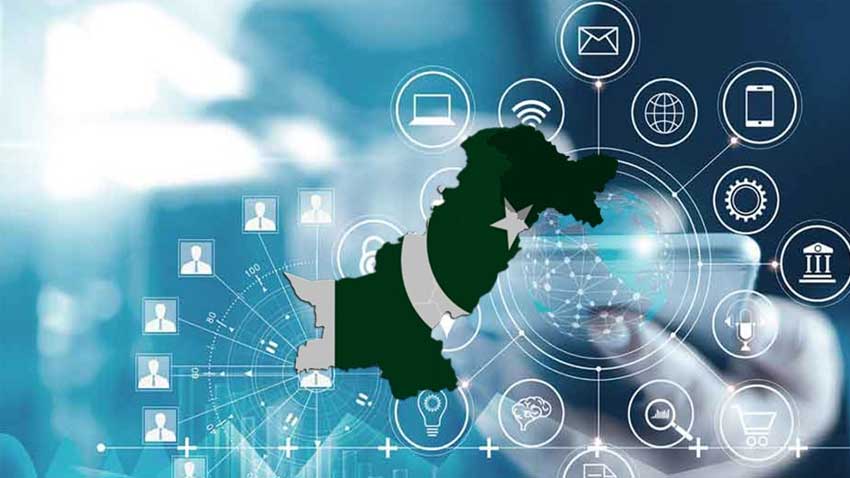
For Pakistan, where digital access remains unevenly distributed, the issue has only grown more pressing in the aftermath of the COVID-19 pandemic.
The stark divide between those who can seamlessly integrate into the digital landscape and those who cannot highlights a significant social and economic challenge, affecting millions of Pakistanis across urban and rural areas alike.
The digital divide in Pakistan reflects disparities in access to the internet, smartphones, computers, and other essential technological tools. While urban areas, particularly major cities like Karachi, Lahore, and Islamabad, have seen substantial digital growth and connectivity, rural and underprivileged communities lag far behind.
Estimates suggest that only around 25% of Pakistan’s population has access to reliable internet, with a significant portion of the population—especially in rural areas—relying on outdated, low-speed connections, if they have access at all. This lack of digital infrastructure limits opportunities for these communities, cutting them off from vital resources in education, employment, and social participation.
The impact of this digital divide is particularly evident in education. When schools across Pakistan shifted to online learning during the pandemic, millions of students faced severe disruptions. In rural areas, many families lack internet access, and even if available, it is often too expensive or unreliable for consistent use. As a result, students from these regions experienced significant learning losses, widening the gap in educational attainment between socio-economic groups. The divide also affects female students disproportionately, as cultural and economic barriers often prevent them from accessing digital devices, further hindering their educational progress.
The effects extend to career opportunities as well. In today’s job market, digital literacy is increasingly seen as a fundamental skill, and remote work or online freelancing has emerged as a viable option for many Pakistanis. However, individuals without access to the internet or the skills to navigate digital platforms are left out of these opportunities. Young adults in low-income and rural areas, where unemployment rates are often higher, face limitations in finding well-paying jobs and accessing training programs that could improve their career prospects.
This exclusion perpetuates cycles of poverty and limits upward social mobility, creating a long-term economic disadvantage.
Social inclusion, too, suffers as a result of the digital divide. Technology serves as a powerful tool for building connections, engaging in civic activities, and gaining access to essential services, from telemedicine to government assistance programs. In a digitally connected world, those without internet access or digital skills find themselves increasingly isolated. This isolation is particularly challenging for marginalized groups, including people with disabilities, women in conservative households, and those in remote regions, who could benefit from online support networks and digital resources but lack access to them.
The barriers to bridging this digital divide are multifaceted. Infrastructure challenges are significant; rural regions require extensive investments in broadband and mobile network expansions, which are often costly and slow to implement. The high cost of devices and data also poses a challenge for low-income households, where purchasing a computer or maintaining a reliable internet connection may be out of reach. In addition to infrastructure, digital literacy remains a significant hurdle. For many in rural areas or older generations, unfamiliarity with technology creates a learning barrier that prevents them from utilizing even basic digital tools.
Despite these challenges, there are clear opportunities to address the digital divide and promote greater inclusivity. Government programs focused on expanding digital infrastructure can make internet access more affordable and widespread, particularly in underserved areas.
Public-private partnerships offer a pathway for mobilizing resources and expertise. Initiatives such as the ‘Digital Pakistan’ program have already laid groundwork in this regard, aiming to bring digital connectivity and skills to a broader segment of the population. However, sustained and focused efforts are needed to ensure that the most vulnerable populations are not left behind.
In addition to infrastructure, addressing digital literacy through education is essential. Integrating digital skills training into school curriculums, especially in public schools and rural areas, can equip students with the knowledge they need to succeed in a tech-driven world. For adults, community centers and vocational training programs can provide essential digital skills, such as navigating the internet, using basic software, and accessing e-government services. Moreover, targeted programs focusing on women and marginalized communities can promote equitable access, creating digital hubs where they can safely learn and connect.
Incentivizing affordable access to technology is another crucial step. Subsidized devices, affordable data packages, and public Wi-Fi initiatives can reduce the cost barriers that prevent many Pakistanis from getting online. Financial incentives for tech companies to invest in rural areas, along with regulatory support for affordable pricing models, can further drive digital inclusivity.
For Pakistan, bridging the digital divide is about more than just technology—it is about creating a more equitable and inclusive society. In a world where digital connectivity increasingly determines access to resources, opportunities, and social participation, ensuring equitable access to technology is vital. A nation’s development is only as strong as its ability to empower all its citizens, regardless of their socio-economic background or geographic location. By addressing the digital divide, Pakistan can unlock the potential of millions of individuals, contributing to a stronger, more resilient economy and a more inclusive society.
As Pakistan moves forward, a collaborative approach involving the government, private sector, educational institutions, and civil society will be essential to bridging the digital divide. Only then can Pakistan create an environment where technology serves as a tool for empowerment and equality, allowing every citizen to participate fully in the ‘digital’ age.




